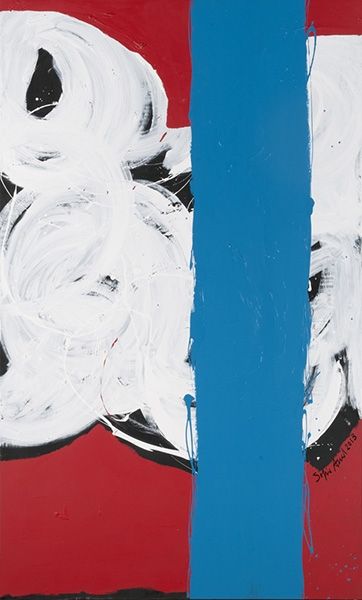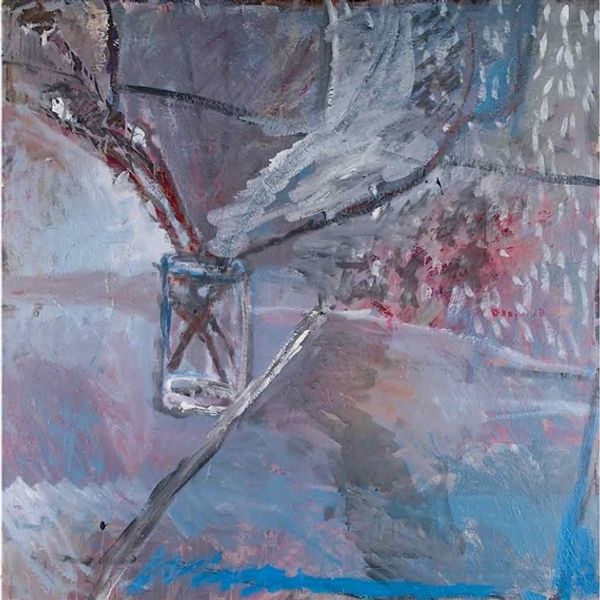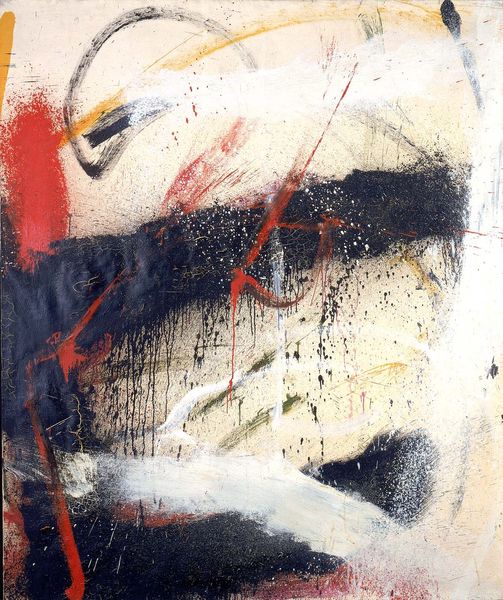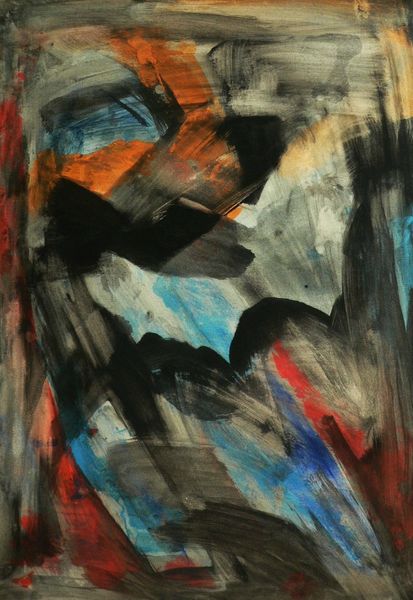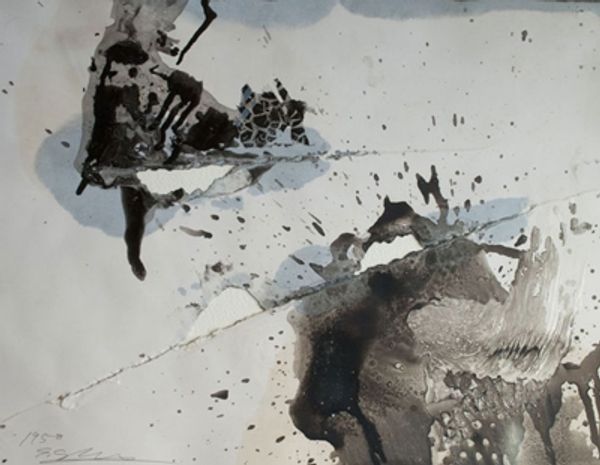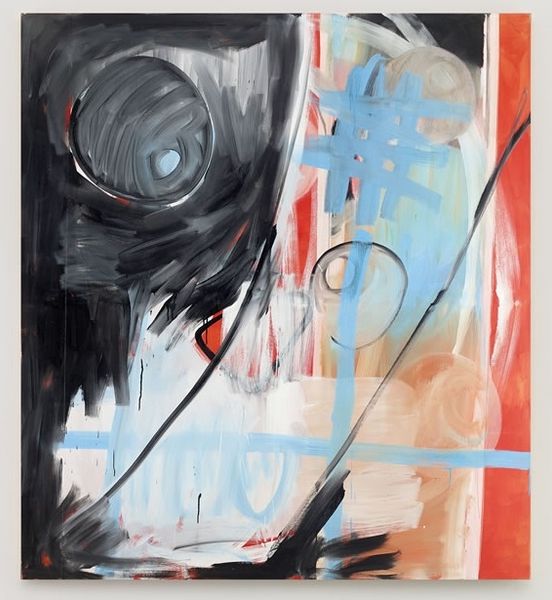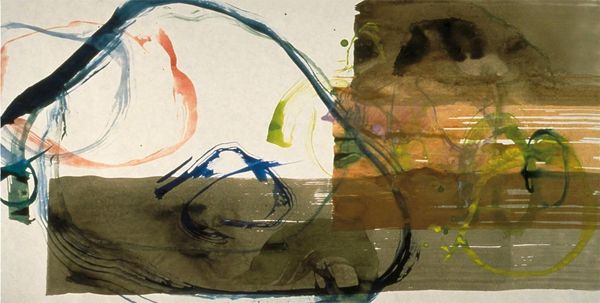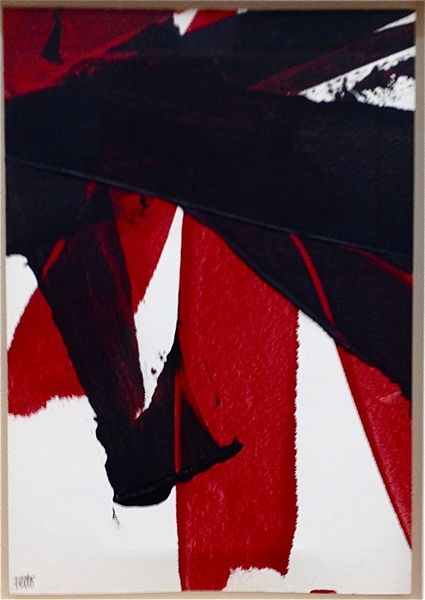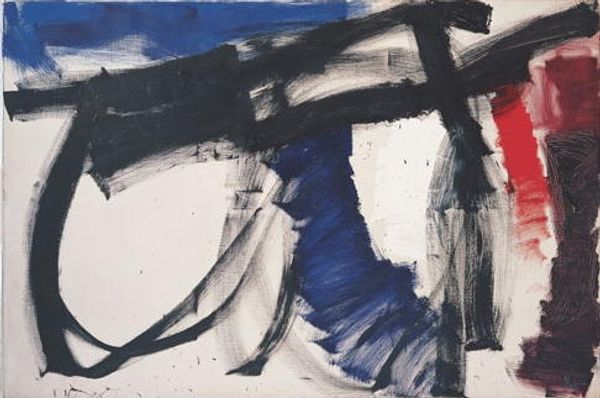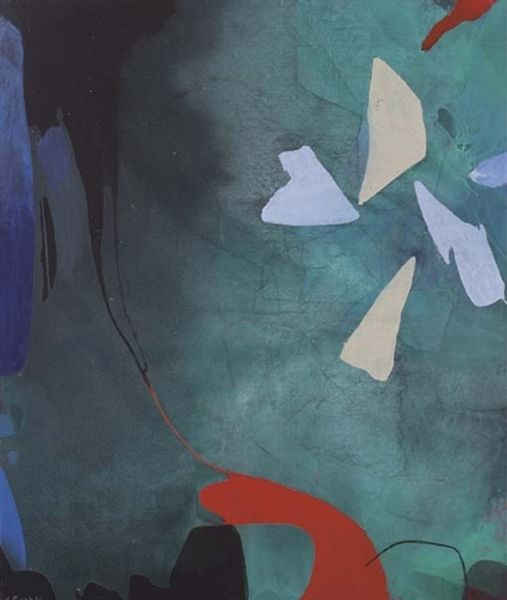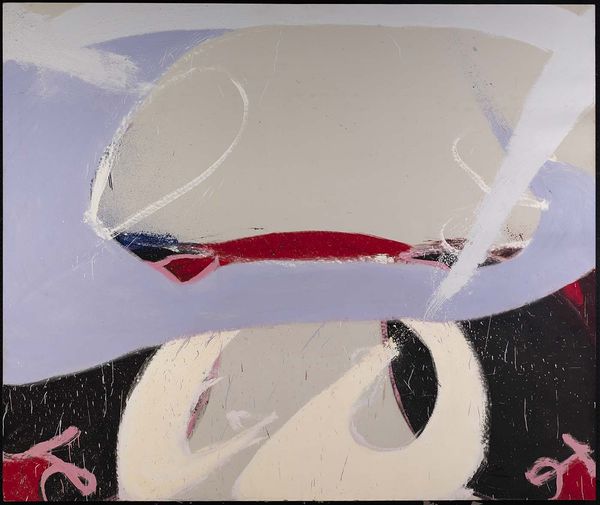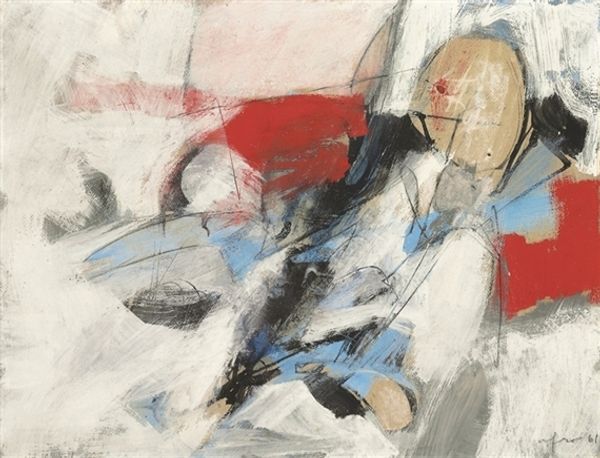
acrylic-paint
#
abstract-expressionism
#
acrylic-paint
#
acrylic on canvas
#
abstraction
#
allover-painting
#
modernism
Copyright: Helen Frankenthaler,Fair Use
Editor: This is an untitled piece by Helen Frankenthaler, painted in 1960 using acrylic on canvas. There's a sense of immediacy to it, almost like catching a fleeting thought. What do you see in this piece? Curator: The immediacy you sense speaks to Frankenthaler’s process and the broader Abstract Expressionist movement. Notice the thin washes of color, the way the acrylic soaks into the canvas, almost staining it. Think about the tradition of the nude, the layering of the paint is like a veil. This action blurs the lines between abstraction and figuration in a similar way. Do you see that interaction? Editor: I do, and it makes me consider the visual impact the painting must have had. At first, I focused on its colours. How would that interaction resonate in the early 60s? Curator: The staining technique liberated colour. Consider the historical weight of colour in art: traditionally symbolic, representing status or religious significance. Frankenthaler uses colour more freely, more emotionally. The large blue shapes could evoke calmness and melancholy. Does that align with your interpretation? Editor: Yes, it adds a layer of emotional depth to the work that I didn't notice initially. The splashes create a mood of both boldness and reflection. It feels raw and honest. Curator: Precisely. The emotional openness conveyed by these techniques allows her work to exist across cultures and time periods. What's your final thought now, considering her impact? Editor: That’s powerful! The artwork's timeless and universal feelings might well be its greatest achievements. I came thinking it was abstract but thinking again. Curator: Agreed, and its continuous cultural relevance has continued through time, too.
Comments
No comments
Be the first to comment and join the conversation on the ultimate creative platform.

